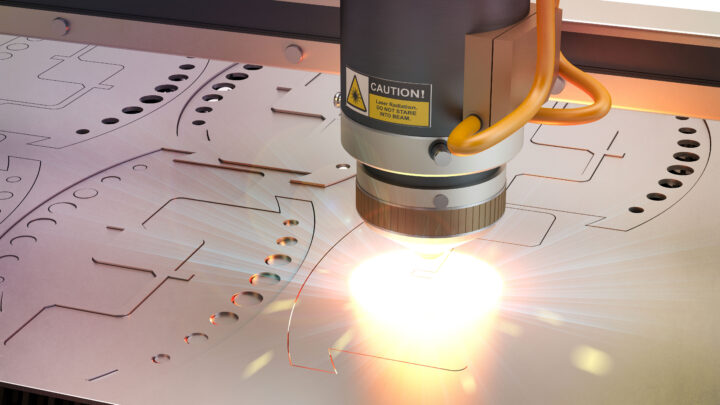How To Start A Laser Cutting Business In 7 Easy Steps

If you’re interested in starting your own business, but you’re not quite sure what do you want to do, you may be interested to learn that laser marking and engraving is emerging as one of the most popular and profitable business as of recently. Maybe that’s exactly what you were looking forward to doing, but you don’t know how to start or what do you need. If that’s the case – you’re in luck. Today, we’re going to try and explain to you how you can start a laser cutting business in just a few steps, which you can later follow and start your own company. But, before we do that, let’s get over some important stuff.
What Is Laser Engraving?

Lasers are a part of pretty much every industry nowadays and their application is vast. From etching and marking materials such as metal, wood and paper all the way to the high-end technology stuff. We’re interested in the former.
Laser cutting and engraving is just what the name entails. It’s a process of cutting, marking, etching or engraving many different types of material including, but not exclusive to, metal, rubber, wood, paper, leather, glass, plastic and so much more. Every material we’ve named so far is quite different from one another. You can easily cut wood with a saw, but glass, that’s a different story.
What’s great about lasers is that they can be adapted in such a way, so that they can cut into virtually anything. There are a lot of different laser cutting machines on the market, each of them made specifically to perform a certain task or cut a certain material.
If you want to be a part of this growing industry, you need to understand that first. Not every instrument is the same and regardless of what you’re planning on working with, you need specially designed gear for the materials you intend to be working with. So, now that you know the basics, let’s move on to our step-by-step guide for starting a laser-cutting business.

1. Understanding Your Customer Base
First and foremost, business is about providing a service someone else can use – it’s not about getting rich quick. So, the first thing you need to is to understand your customers, what do they need and how you can help them. This has to be the first step towards your new business because unless you do, you’ll end up investing in something without a proper business plan and that’s just a recipe for disaster. So, do a little bit of research and find out what your potential customer base is looking for and find an answer as to how you’ll provide them with it.
2. Define Your Product
Once you’ve identified your potential customer base it’s time to start planning the product. Now, this part is a little tricky. You don’t want to limit yourself to a niche that’s too narrow, but you don’t want to branch out too wide right out the gate. So, think about what it is that you can offer and go from there.
3. Think About The Equipment
Once you’ve settled on the product, you have to find the proper equipment. As we’ve mentioned, these devices aren’t all-mighty. Most of them are specially designed for certain materials and they can’t be used for something else. For instance, if you’re planning on engraving trophies or cutting metal for car parts, you have no use from a laser paper cutting machine. On the other hand, if you’ve decided you’re going to focus on dealing with paper, plastic, glass or perhaps wood – then the paper cutting machine is just what you need. It’s important to do your research before you invest into gear because if you don’t, well, you’re wasting money and that’s not good business, so click here for more details.
4. Create A Business Plan

Once you’ve settled on these matters, it’s time to devise a proper business plan and get to work. Having a clear vision and a business plan is essential for every successful entrepreneur – so get to planning. First, you need to set realistic, achievable goals regarding sales, production value, customer outreach and so on. After that, it’s time to sit down, run the numbers and create a realistic estimate of the initial and running costs, as well as general capital expenses. This should give you a solid insight as to how much you’ll have to invest right away and when you can expect to break even and start earning money from your business. Could be a month, could be a year – you can’t be sure, but you can make a solid guess based on the research you’ve done and the plan you’ve devised.
5. Create A Business
Once you’re done with all of the previous steps – it’s time to put things into motion. At this point, you’ll have to establish a legal business entity. The best way to do so, especially if you’re new to all of this is to form an LLC. That is the best way to protect yourself in case something goes terribly wrong and the business fails. It’s always important to have a safety net, no matter how sound and good the plan is. If you need help with legalising your business, you can always hire an attorney at law for assistance. During this step, you’ll cover all the important legal aspects regarding new businesses, such as becoming tax compliant and so on.
6. Branding & Marketing
Once the company is up and running, it’s time to create and build the company brand. Branding has never been more important than it is today. You have to be recognizable if you want to attract customers. Do your best to create a strong brand that people will identify with reliability and quality product and once you do that – it’s time to spread the word.
Marketing is arguably the best way to put your business on the map. Luckily, there have never been more marketing options. You can do anything you want – from traditional marketing methods, through targeted, paid ads via Facebook or Instagram, to your personal social media accounts. You can advertise for free, you can pay for ads, you can collaborate with other business – options are limitless.
7. Work Hard

Finally, we’ve come to the last step and arguably the most important one – work hard and smart. Everything we’ve mentioned up to this point will be irrelevant unless you work hard and perfect your craft. Hard work and a quality product are ultimately what separates successful businesses from failing ones and you should always strive to be a part of the successful ones.
Hopefully, we’ve helped you realize what it is that you need if you want to start a laser cutting business and best of luck in your future endeavours.
